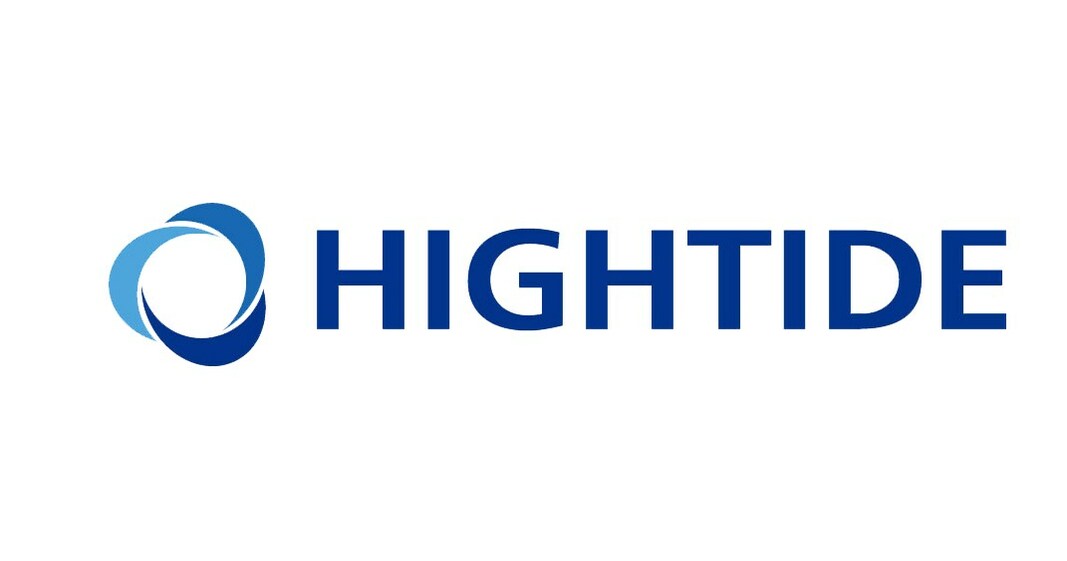The well-being of our children is non-negotiable, yet recent revelations about lead levels in baby foods have left parents worried and questioning the safety of the products they trust. To address this concern, the U.S. Food and Drug Administration (FDA) has set maximum lead levels for certain baby foods, aiming to reduce the exposure of young children to this harmful metal. While these measures are a step forward, they have sparked debates on whether they go far enough in safeguarding the most vulnerable members of society.
The FDA’s final guidance on lead levels in baby foods is part of its broader initiative to minimize dietary exposure to contaminants. This move targets processed baby foods such as jarred fruits, vegetables, yogurts, and dry cereals. According to the FDA, the guidelines could reduce lead exposure from these products by 20% to 30%.
The limits, however, are voluntary for manufacturers. This raises an important question: if these limits are not mandatory, can they truly protect children? While the FDA can take enforcement action against foods exceeding the recommended levels, the lack of stringent regulations leaves room for inconsistency in compliance.
What Are the New Limits?
The FDA’s guidance sets the following lead limits for baby foods:
• 10 parts per billion (ppb) for fruits, most vegetables, grain and meat mixtures, yogurts, custards, puddings, and single-ingredient meats.
• 20 ppb for single-ingredient root vegetables and dry infant cereals.
These limits apply to packaged, processed baby foods sold in jars, pouches, tubs, or boxes. Despite these measures, critics argue that they fail to address the bigger picture. Lead can also be found in grain-based snacks, puffs, and teething biscuits, items not covered under the new guidelines.
Lead is a neurotoxin, and even minimal exposure can have significant health consequences for children. The Centers for Disease Control and Prevention (CDC) states that no amount of lead is safe for children. The metal has been linked to developmental delays, brain and nervous system damage, and slowed physical growth.
Lead contamination often stems from environmental pollutants in air, water, and soil, making its complete elimination a challenge. However, reducing exposure to the lowest possible levels is essential for protecting children’s health.
While the FDA’s efforts have been welcomed by some, many consumer advocates believe the measures fall short. Thomas Galligan, a scientist at the Center for Science in the Public Interest, commended the guidelines as a positive step but criticized the delay in their implementation. According to Galligan, the FDA missed opportunities to incorporate public feedback that could have resulted in stronger standards.
Brian Ronholm, director of food policy at Consumer Reports, expressed harsher criticism. He labelled the limits “virtually meaningless,” arguing that they prioritize industry feasibility over public health. This sentiment underscores the need for stricter regulations that prioritize safety over convenience for manufacturers.
Concerns over lead in baby foods reached a critical point between October 2023 and April 2024, when over 560 children in the U.S. fell ill after consuming lead-tainted apple cinnamon puree. The lead levels in these products were over 2,000 times higher than the FDA’s maximum allowable limits. This alarming incident highlighted the urgent need for robust safeguards to prevent similar occurrences in the future.
Major baby food manufacturers have responded to the FDA’s guidance with varying degrees of enthusiasm. A spokesperson for Gerber stated that the company’s products already meet the new limits. However, this assurance does little to alleviate concerns about other brands or products not covered by the guidelines.
One of the biggest obstacles in reducing lead in baby foods is its natural occurrence in the environment. Contaminants from air, water, and soil can seep into crops, making it nearly impossible to eliminate lead. The FDA acknowledges this reality, emphasizing the need for incremental progress over time.
However, critics argue that more can be done to address other harmful metals, such as cadmium, which are also present in baby foods. By expanding its focus beyond lead, the FDA could take a more comprehensive approach to ensuring the safety of children’s diets.
The current FDA guidelines are a start, but they leave several critical areas unaddressed:
1. Inclusion of Grain-Based Snacks: Items like puffs and teething biscuits, which are staples in many households, remain unregulated despite research showing higher lead levels in these products.
2. Focus on Other Metals: The guidelines overlook cadmium and other harmful metals, which can also pose risks to children’s health.
3. Mandatory Compliance: Making the limits voluntary gives manufacturers the flexibility to ignore them without facing significant consequences.
While regulatory bodies and manufacturers work toward safer products, parents and caregivers play a crucial role in protecting their children. Here are some practical steps to reduce lead exposure at home:
• Choose Fresh Foods: Whenever possible, opt for fresh or homemade baby foods to minimize exposure to processed items.
• Check Labels: Look for brands that prioritize transparency and adhere to safety guidelines.
• Advocate for Change: Support organizations and initiatives pushing for stricter regulations on lead and other contaminants in baby foods.
The FDA’s new guidelines are a step in the right direction, but they must be part of a larger effort to overhaul the baby food industry. Stricter regulations, mandatory compliance, and expanded coverage are essential to ensure that all children have access to safe, nutritious foods.
Parents and caregivers deserve the assurance that the products they buy for their children meet the highest safety standards. By prioritizing public health over industry convenience, we can work toward a future where every child is protected from the dangers of lead exposure.
As the FDA continues its efforts to reduce dietary contaminants, the focus must remain on the well-being of children. The new guidelines have set a foundation, but there is still much work to be done. Collaboration between regulatory agencies, manufacturers, consumer advocates, and parents will be key to driving meaningful change.
The ultimate goal Is clear: a world where baby foods are not just convenient but also safe, nutritious, and free from harmful toxins. Until then, the fight for better standards and greater accountability must continue because the health of our children depends on it
http://www.21stcenturyhospitalgownplus.com/
http://www.elite-factory-15.fr/
http://www.gba-amateurboxen.de/
http://www.kita-strausberg.de/
http://sonispicehelensburgh.co.uk/
http://curryzonecardonald.co.uk/
http://cinnamon-edinburgh.co.uk/
http://www.bombaydelipaisley.com/
http://pizzanightclydebank.co.uk/
http://www.pizzanightclydebank.com/
http://gyros2goclydebank.co.uk/
http://grillicious-glasgow.co.uk/
http://www.abdulstakeaway.com/
http://www.freddiesfoodclub.com/
http://cinnamonportobello.co.uk/
http://www.romafishnchips.com/
http://bombaydelipaisley.co.uk/
http://yaraloungerestaurant.co.uk/
http://tasteofchinacoatbridge.co.uk/
http://www.memoriesofindiagorebridge.com/
http://memoriesofindiaeh23.co.uk/
http://freddiesknightswood.co.uk/
http://gyros2gohardgate.co.uk/
http://www.strausseeschwimmen.de/
http://www.janstanislawwojciechowski.pl/
http://london-takeaways.co.uk/
http://shahimanziledinburgh.co.uk/
http://freddiesfoodclub.co.uk/
http://www.spicestakeaway.com/
http://www.mexita-paisley.com/
http://pandahouseglasgow.co.uk/
http://www.zum-alten-steuerhaus.de/
http://www.oberstufenzentrum-mol.org/
http://www.morsteins-neuenhagen.de/
http://www.maerkische-jugendweihe.de/
http://www.planungsbuero-henschel.de/
http://www.hertzelektronik.de/
http://www.militaergefaengnisschwedt.de/
http://www.fahrrad-naumann.de/
http://www.hondamoto-villemomble.com/
http://www.hondamoto-royan.com/
http://www.hondamoto-ajaccio.com/
http://www.download-skycs.com/
http://www.sisakoskameleon.hu/
http://www.hondamoto-montauban.com/
http://www.hondamoto-chalonsursaone.com/
http://www.hondamoto-champignysurmarne.com/
http://www.hondamoto-asnieres.com/
http://www.pasquier-motos.com/
http://www.evacollegeofayurved.com/
http://www.compro-oro-italia.it/
http://www.hondamoto-saintmaximin.com/
http://www.hoangminhceramics.com/
http://www.pasiekaambrozja.pl/
http://www.xn--b1alildct.xn--p1ai/
http://www.ferreteriaflorencia.com/
http://www.thevichotelkisumu.com/
http://www.nexuscollection.com/
http://www.moitruongminhhuy.com/
http://www.ozkayalarpaslanmaz.com/
http://www.munkagepmonitor.hu/
http://www.my247webhosting.com/
http://www.thesmokingribs.com/
http://www.healthlabgrosseto.it/
http://www.ochranakaroserie.cz/
http://www.phukiendonginox.com/
http://www.meijersautomotive.nl/
http://www.kartaestudentit.al/
http://www.podlahyjihlavsko.cz/
http://www.hillhouseequestrian.com/
http://www.gradskapivnicacitadela.com/
http://www.capella-amadeus.de/
http://www.landfleischerei-auris.de/
http://www.faistesvacances.be/
http://www.autoservice-doernbrack.de/
http://www.tabakhaus-durek.de/
http://www.oldtimer-strausberg.de/
http://www.imexsocarauctions.com/
http://www.kaslikworkshop.com/
http://www.firefightercpr.com/
http://www.visuallearningsys.com/
http://www.hanksautowreckers.com/
http://www.impresospichardo.com/
http://www.philiphydraulics.net/
http://www.internationaldentalimplantassociation.com/
http://www.indywoodtalenthunt.com/
http://www.badicecreamgame.com/
http://www.riad-amarrakech.com/
http://www.centrodeformacioncanario.com/
http://www.socialdefender.com/
http://www.pepiniere-paravegetal.com/
http://www.reparertelephonearles.fr/
http://www.namsontrongdoi.com/
http://www.devipujakjivansathiseva.in/
http://www.laymissionhelpers.org/
http://www.vangiaphatdeco.com/
http://www.isscoachinglucknow.in/
http://www.hieuchuandoluong.com/
http://www.aurorabienesraices.com/
http://www.indianmoversassociation.com/
http://www.oztopraklarotomotiv.com/
http://moitruongnamnhat.com.vn/
http://www.dienmayvinhthuan.vn/
http://www.divadelkoproskoly.cz/
http://www.xn--12cfje1df4hdl7f1bf2evg9e.com/
http://www.westernirontrailers.com/
http://www.jazzaufildeloise.fr/
http://www.signcraft-drone.com/
http://www.realtyhighvision.com/
http://www.thermexscandinavia.nl/
http://imobiliariafelipe.com.br/
http://www.salon-lindenoase.de/
http://www.jezirka-zahrada.cz/
http://www.singhanialogistics.in/
http://www.der-pixelmischer.de/
http://www.hegermuehlen-grundschule.de/
http://www.radiologie-strausberg.de/
http://www.foto-studio-matte.de/
http://www.tables-multiplication.com/
http://www.rusztowania-belchatow.pl/
http://www.fishingandhuntingheaven.com/
http://www.orologiegioiellilameridiana.it/
http://www.rotarybresciaest.org/
http://www.jacarandaspain.com/
http://www.javieririberri.com/
http://www.huebelschraenzer.ch/
http://www.illinoiscreditunionjobs.com/
http://www.iznikdenizorganizasyon.com/
http://www.leasebackconcierge.com/
http://www.eoisantacoloma.org/
http://skullbasesurgery.co.uk/
http://www.immobilienplattensee.com/
http://www.germandailynews.com/
http://www.gptdcinternational.com/
http://www.forklifttrainingedmonton.com/
http://www.kashiwanakayama-cl.com/
http://www.thehousemediagroup.com/
http://www.pensiimaramures.ro/
http://www.michaelakokesova.cz/
http://www.viswabrahmanaeducationaltrust.com/
http://krone-aluminium.com.pl/
http://www.broadwaylumber.com/
http://www.ambulancesoccasions.com/
http://www.continuumintegrated.com/
http://www.joilifemarketing.com/
http://www.rotaseydisehir.com/

 By prioritizing public health over industry convenience, we can work toward a future where every child is protected from the dangers of lead exposure.
By prioritizing public health over industry convenience, we can work toward a future where every child is protected from the dangers of lead exposure.





.jpeg)
.jpeg)

.jpeg)
_(1).jpeg)
.jpeg)
.jpeg)

_(1)_(1)_(1).jpeg)






.jpeg)

.jpeg)

.jpeg)
.jpeg)
.jpeg)




